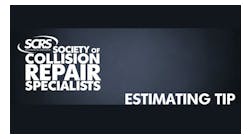Romans Group's Profile of the Evolving U.S. and Canada Collision Repair Marketplace
The Romans Group, an international consulting firm, released a white paper on the evolving collision repair market in the U.S. and Canada.
The 18th edition of the annual white paper advances insights in the evolving U.S. and Canadian collision repair markets. Moving further away from COVID’s impact and as the industry continues to normalize, growth is observed in both the U.S. and Canadian markets. The U.S. TAM reached an all-time high of $50.0 billion in 2023, up from $44.8 billion in 2022, while the Canadian TAM increased to Can$4.5 billion in 2023, up from Can$3.95 billion in 2022.
Throughout 2023, a more aggressive group of mid-size private-equity-funded consolidators accelerated both single and multiple-shop acquisitions and geographic diversity. Investor confidence in the collision repair industry has been boosted by what is seen as outsized industry financial performance.
The collision repair space continues to deliver its long-term proposition of proven economics and growth supported by insurance industry-driven demand dynamics that create cash flow stability and profitability for many of the best operators. Over the past decade, this value proposition has led to the continued influence of private equity’s investment growth strategy targeting both larger and smaller independent MSOs.
Collision Repair Industry
Some highlights of the 2023-24 collision repair industry:
- Aggressive MSO consolidators such as VIVE, Open Road, CollisionRight, and Quality Collision Group are building their regional and super-regional platforms to compete with larger legacy consolidator MSOs like Caliber, Boyd/Gerber, Crash Champions, Classic Collision, and Joe Hudson.
- Private-equity investors continue to see potential in the collision repair industry and can be viewed as a proxy for what is expected to continue within the collision repair space throughout the remainder of this decade.
- The industry continues to demonstrate favorable year-over-year, non-cyclical sustainable cash flow, recession resistance, and a growing market due to a consistent number of repairable vehicles and rising severity.
- The collision repair space continues to deliver its long-term proposition of proven economics and growth supported by insurance-industry-driven demand dynamics that create cash flow stability and profitability for many of the best operators.
- Regarding physical growth, the benefits and risks to all consolidators continue to be the ability to quickly, efficiently, and effectively integrate expansion and acquisitions. This includes managing and navigating new market dynamics and scale, growing their client and revenue base, balancing ongoing insurance DRP and OEM certification program requirements, leveraging supplier relationships and the economies of purchasing power, as well as effectively integrating their systems and business operating model within new single and multiple-shop markets.
- With capital continuing to flow to larger MSOs and consolidators, single shop and smaller MSOs that are not able to expand and establish a reasonable degree of market scale will continue to find it increasingly difficult to compete.
- While dealership body shop sales increased in 2023 and through the first six months of 2024, the percentage of dealers operating collision repair facilities continued to decline.
Multiple Shop Operator (MSO) Segmentation
Throughout this report, U.S. collision repair organizations are segmented in a variety of ways:
- Independents
- Dealers
- Top three consolidators
- ≥$20M Multiple-Shop Operators (MSOs)
- $10M-$19M MSOs
- ≤$10M MSOs
- Franchise/Banner/Multiple-Location Network (MLN)
- Private equity and other investor-sponsored MSOs
- All other remaining relevant repairers
The ≥$20M segment, especially the top three independent consolidators, Caliber, Boyd/Gerber, and Crash Champions, continues to grow steadily, underpinning the long-term collision repair consolidation trend. Marketplace leadership continues due to:
- Increasing levels of regional and national network scale.
- Organic revenue growth based on market scale, brand recognition, and network performance.
- Insurer DRP and OEM certification relationships.
- Customer acquisition segmentation.
- Multiple-shop platform acquisitions.
- A steady number of strategically placed geographic single-shop acquisitions coupled with greenfield and brownfield development.
- Ability to integrate acquisitions and implement operational and performance improvement.
- Ability to leverage capital expenditures for future growth and development.
Industry Trends
- Both the U.S. and Canadian auto insurance markets remain highly consolidated, with the top ten private carriers controlling the majority share of premiums written and commanding most claims processed and settled.
- The top three auto insurers in both the U.S. and Canada continue to have a strong and disproportionate market share when compared to their peers. This high market share gives these top carriers the scale and clout to substantially influence the various dynamic claims processing models and the leverage to influence which repair providers participate in their DRP and preferred provider programs.
- Consolidators continue to market their “one national/regional shop model/platform” to insurers and their OEM partners, promoting their large marketplace network of available collision repair shops throughout multiple regions and the U.S.
- Some high-performing regional MSOs are opting out of some insurer DRP programs to avoid the number of constraints and perceived roadblocks encountered when performing repairs to DRP standards versus repairing vehicles to OEM-recommended standards.
- Average repair costs continue to increase due to greater repair complexity and higher inflation.
The report can be purchased by contacting Mary Jane Kurowski of The Romans Group LLC at
[email protected].



